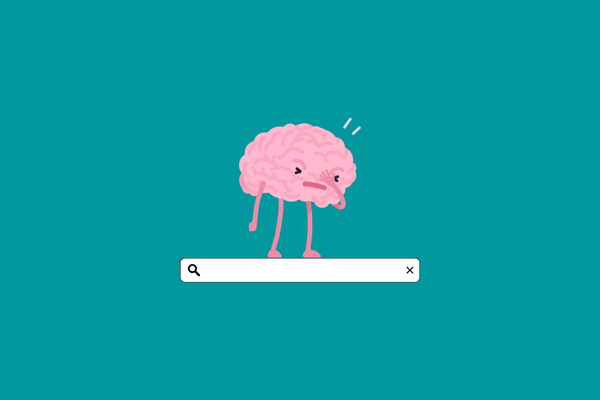Johari Window Model: Get to know your unknown
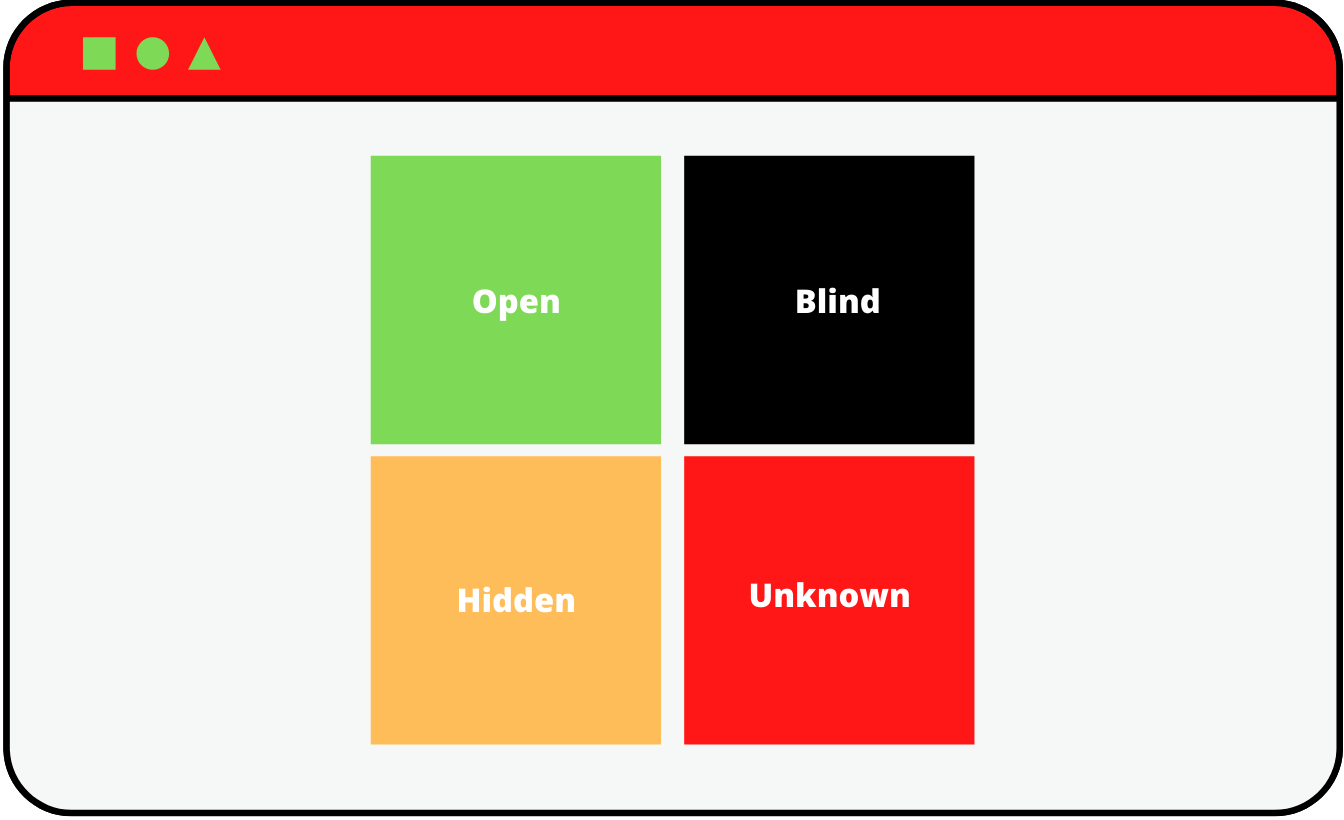
Self-awareness plays a big role in our social relationships. Sharing personal information about yourself is necessary to establish relationships. The Johari window model will help you communicate more authentically by increasing your self-awareness.
The model was developed by Joseph Luft and Harry Ingham in 1955.
The Johari window is a method that increases understanding between group members and facilitates effective communication. The method improves the communication of individuals, their image of each other.
The Johari Window is based on two basic premises:
- You can establish a confidential relationship with others by sharing information about yourself.
- Feedback from and attention to others is at least as important as assertive communication.
The Johari window is a widely used model for developing self-awareness, interpersonal relationships, and group dynamics to improve communication.
The lessons of the model can also be used in our boss/subordinate, employee, and personal relationships.
But what does this much-mentioned window look like?
What do you know about yourself?
Everyone has qualities, abilities, motivations, and values that they are aware of and that are a mystery even to themselves.
There are things we know about ourselves and stuff we don’t have a clue about.
You may be a talented swimmer, you may love Mexican food, but as long as you avoid the pools and see a strange need to escape at the sight of Mexican restaurants, you won't realize these.
What do others know about you?
While the first question focused on my knowledge, the other questions seek to explore the external world’s perception of me.
I may consider myself a kind and friendly person, but if the image of a low grim dictator lives on me in the minds of others, I either don’t express myself effectively or I’m not that kind.
Self-image + Opinion of others = The Johari Window
If we add the two parts, we get a window divided into four parts, the horizontal variables of which are the known and unknown parts of the image of myself, while the vertical axis is lined with information perceived or hidden about me by others.
The four windows contain personal information, feelings, motivations, and knowledge of them towards us and our environment or just a lack of knowledge.
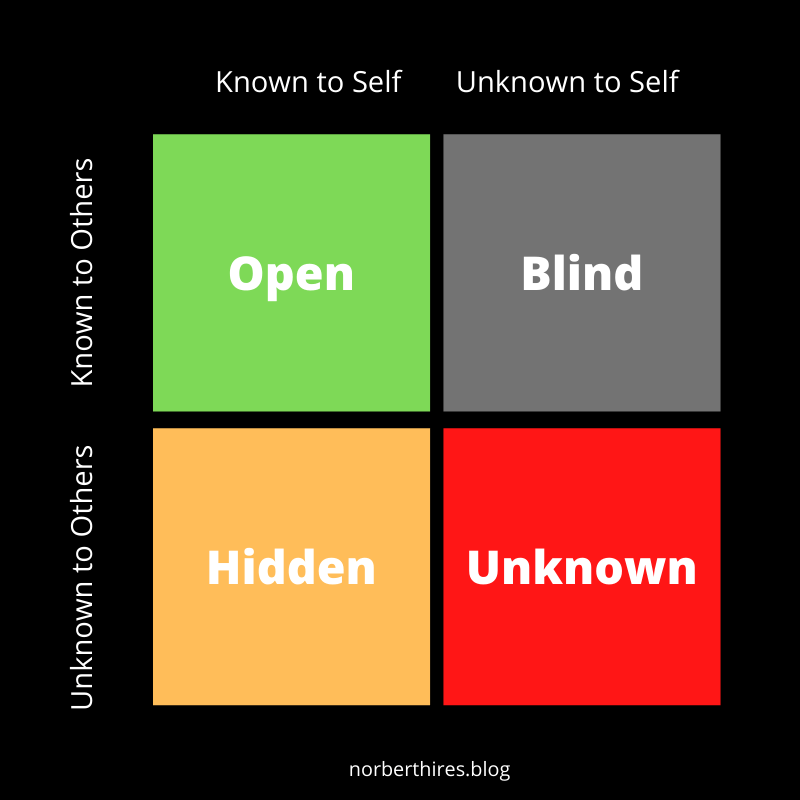
Information can be transferred from one window to another through mutual trust.
Interoperability between windows is made possible by getting to know others, opening up to them, asking for their opinions, and listening to them.
At the same time, we must not forget that everyone has a different Johari window, different from community to community, which is constantly changing.
Wondering what the ideal Johari Window is like and how it can help your relationships and improve your self-knowledge?
This will also be the case, but to understand this we will know the meaning of the four windows.
Four quadrants of the Johari Window
Open area
In the open area, or other words in the arena, are the abilities, feelings, knowledge of the individual that is known to both the individual and his environment.
In general, communication takes place in the arena itself. The larger the arena, the more effectively we communicate and the deeper our relationship with our environment. Effective communication and effective cooperation free from misunderstandings, mistrust, and conflict take place in the arena.
The size of the open space can be increased by asking for feedback, during which we not only ask others for their opinions about us but also listen to it and accept any advice they may have.
The goal of all groups and relationships is to have as much open space as possible, because in a community (be it the workplace or family) we are most productive and efficient when our arena is extensive.
Blind area
The blind spot symbolizes information that others know about you, but you don’t.
Others may interpret you and your actions differently than you think. The blind area is the part of the Johari window where soliciting the opinions of others can improve you the most.
We can call the blind area ignorance, it can be caused by bad self-awareness or non-self-identical behavior.
In our relationships, we can help others reduce their blind spot by discreetly sharing our opinions with them.
- Are you bothered by a co-worker loudly chatting on the phone?
- Are you mad at your friend leaving his socks around the apartment?
Probably none of them will notice this, so you can improve your relationship with honest feedback.
Hidden area
Everyone has a hidden side, qualities, stories that you want to keep from others. This information forms the hidden area of the Johari Window.
There is a reason we are afraid to reveal certain parts of our personality to others and most of the time we don’t even need that. By sharing relevant information and feelings, we can reduce the hidden space and increase the arena, resulting in a better understanding of ourselves and others, effective collaboration, and increased trust.
However, it’s worth noting that opening up is done well at a pace and depth that’s comfortable for you.
Unknown area
The depths of your personality that are foreign to you and others make up the unknown territory. The unknown territory covers hidden information, feelings, abilities, talents, and more.
Young people usually have a large unfamiliar area as they do not yet have enough experience and self-knowledge.
Examples of unknown territory:
- An ability you didn’t have the opportunity to practice because of a lack of opportunity, encouragement, or confidence.
- Repressed or subconscious feelings.
- Behavioral patterns from childhood.
How can we reduce the size of the unknown area?
By trying.
Individually, you should take advantage of every electrifying opportunity, and as a leader, you can achieve positive results by creating a culture where others can make mistakes without pressure and serious consequences.
Developing the Johari window
We can shape our social relationships and our place within a group with conscious work. In each case, our goal is to increase the area of the arena, and we have two methods for this.
Feedback - Horizontal gain
If you want to increase the size of the open area horizontally relative to the blind area, you need to speak up. The blind spot symbolizes information that others know about you, but you don’t.
Want to find out what others think of you?
Ask!
Horizontal gain is possible by requesting feedback.
You can achieve this in a low-cost way by simply asking for the opinions of others, but there are also more sophisticated practices for this.
If you ask others for their opinion of you through a mediator, you are more likely to get honest feedback.
Seriously, a 360-degree rating can also help spread the horizontal area by reducing the blind area.
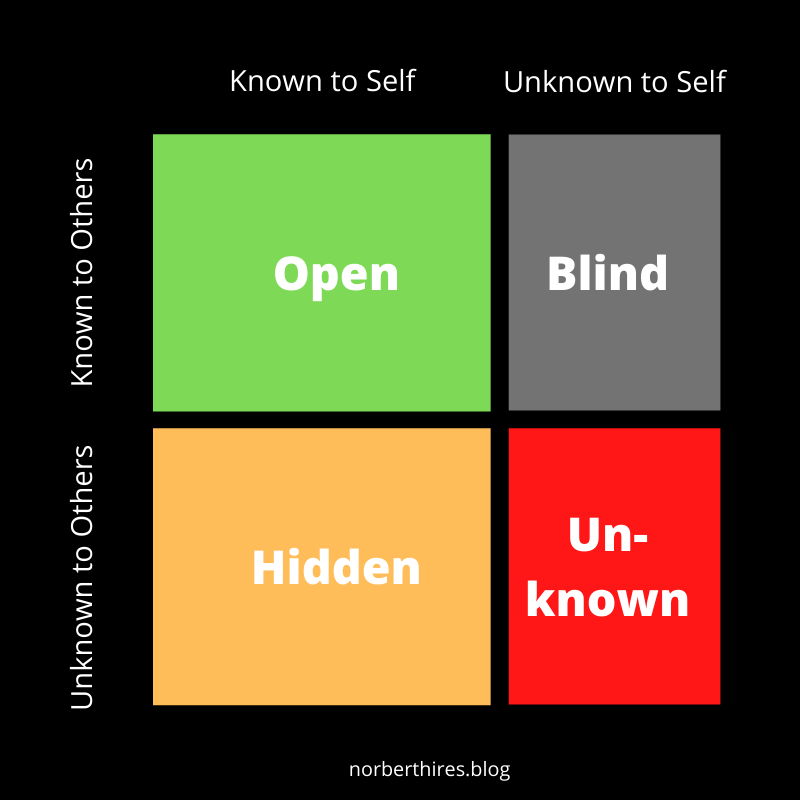
Opening - Vertical change
To improve our relationships, in addition to asking for feedback, it’s worth sharing a piece of ourselves as well. By opening to a comfortable level, we can exercise vertically down the arena at the expense of the hidden area.
When using the Johari window, it’s worth striving for balance, asking for feedback, and at the same time talking about yourself and your feelings with others.
If we exaggerate any of them, a distorted Johari window and a problematic connection will result.
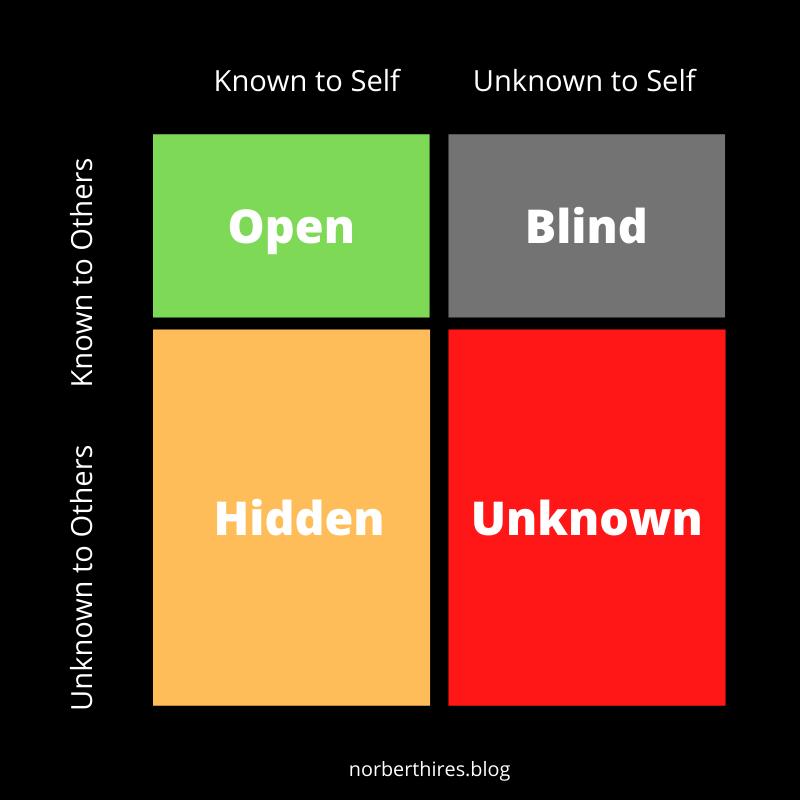
Johari window examples
Cheerleader effect
Outline a typical cinematic cliché. Take a popular high school student, a cheerleader called Brittany with two royal followers in the form of girlfriends. Girlfriends keep hearing about Brittany’s adventures, successes, and dreams.
Brittany takes the opening up seriously to a superficial level but never asks for the girl's opinions.
Regardless of the endless stories if Brittany does not seek the opinions of others, her followers will sooner or later depart from her.
One of the most common examples of a one-sided relationship is the “cheerleader effect”.
Too much speech without feedback and frequent feedback followed by deep listening is not a sustainable way of building healthy relationships.
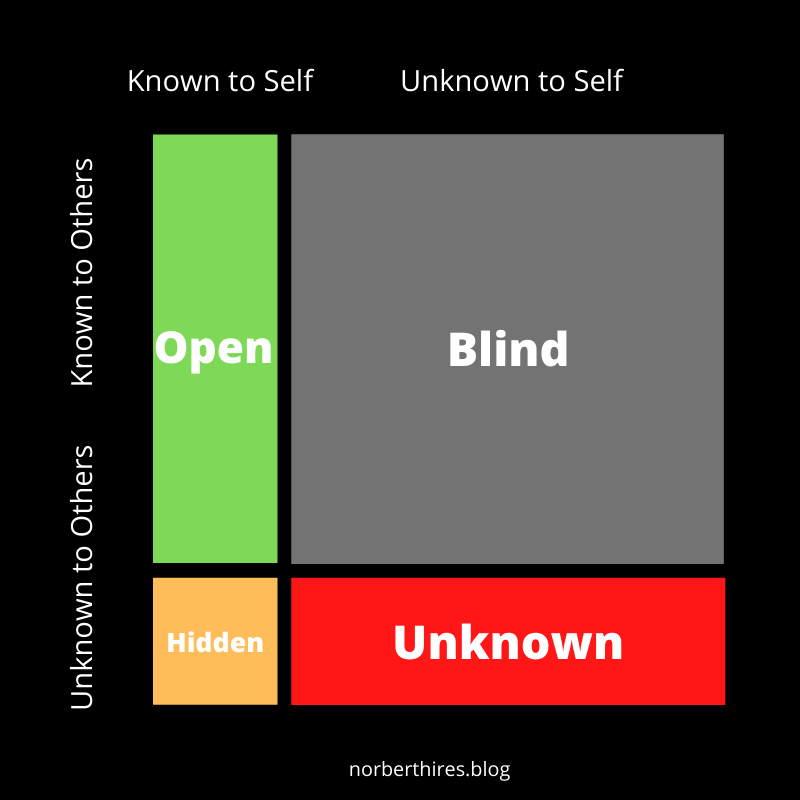
The Ideal Johari Window
I also talk and listen.
I also ask for and give feedback.
Somehow this is what an ideal Johari window looks like. Huge open area and three tiny rectangles in the background.
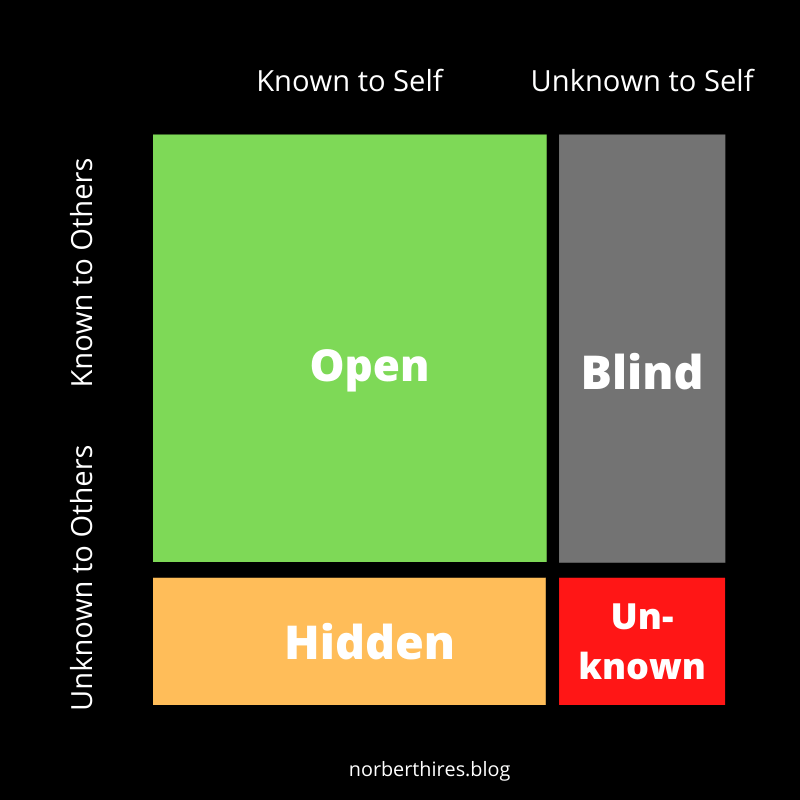
The simpler a model, the easier it is to use. Models divided into four parts, such as the Eisenhower matrix or the Johari window, are easy to understand but do not offer a solution for everything.
Parts of the model, such as an unfamiliar area, may require further research, self-improvement work, or even the help of a professional. However, the limitation of the Johari window model does not mean that it is a useless concept.
The Johari window is an elegant and effective model for developing our relationships.
The four rectangles also pointed out my shortcomings and with each conflict, I discover a new area for improvement. While I’m curious to get feedback from others, I still give little of myself.
This is also true for my relationships and my work.
This is partly why I am writing this blog.
To open up.
Ask and give feedback.
For me, that was the lesson of the Johari window.
What did you learn?


